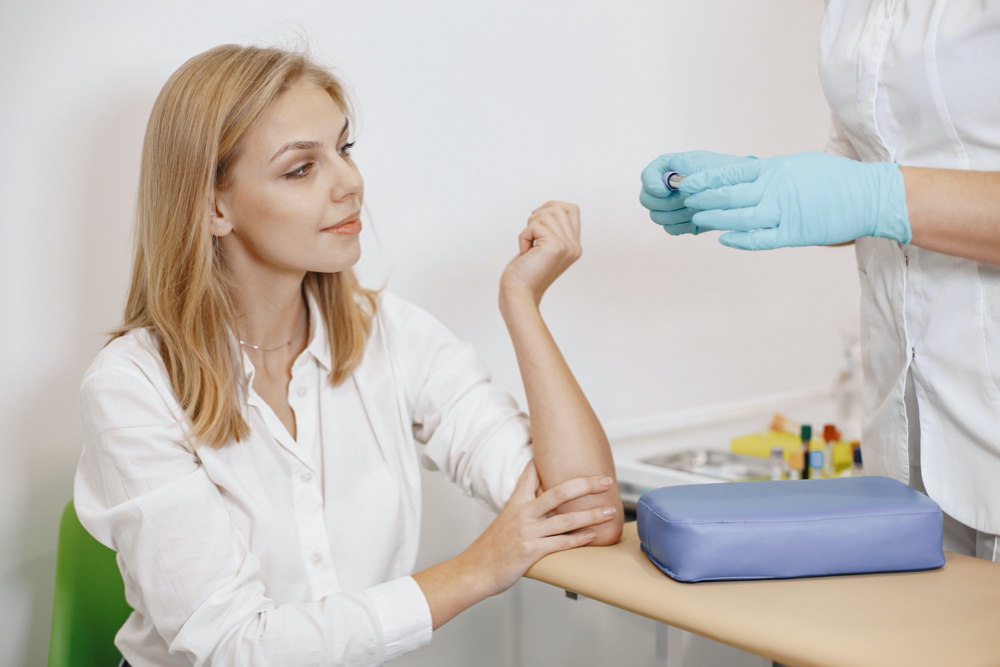- Fast results
- 4,000+ locations
- 4.8 star rating
Need Help? (888) GET LABS



Medically Approved – Dr Salko – TB Blood testing and TB skin testing… The aim of this article is to explain what Tuberculosis is and the different methods of testing available.
Tuberculosis (commonly referred to as TB) is a bacterial infection that is passed from one person to another through the air that they share. TB mainly affects the lungs but can affect other parts of the body too. TB is highly contagious and can be transmitted by simply breathing the air of an infected individual who has sneezed or coughed nearby. This bacterial infection can lead to serious health conditions when left untreated. However, with proper, immediate treatment, TB can be cured.
There are two types or stages of TB- Active TB disease and latent TB infection.
Active TB is when the TB bacteria quickly multiply and travel throughout various body organs. Symptoms of active TB include coughing, weakness, and flu-like symptoms. A person with this illness is contagious and can pass TB to others through coughing, sneezing, and breathing in the close vicinity of others. This condition is treated with drugs.
A person with a latent TB infection is not contagious, does not feel sick or have any symptoms and in some cases aren’t aware of their condition. There is a danger that latent TB could develop into the active disease and therefore should be monitored. People with a weakened immune system are at increased risk of latent TB progressing to the active TB.
Who should get tested for Tuberculosis?
• If you have been around someone with TB
• People who have a weakened immune system
• Those who have TB symptoms
• If you had a positive Mantoux test
• If you have recently visited a country outside of the USA where TB is high risk
• If you are a healthcare worker, working with high risk individuals
• Illegal drug users
There are two ways to test for Tuberculosis (TB)…
A TB skin test is performed to see if you have ever been near TB. A small number of TB proteins are placed under the skin to see if you have a reaction. If you have been exposed to TB you will see a red bump in the testing area.
The limitation of the skin test is that it doesn’t tell you whether you have latent or active TB but rather if you have TB of any type.
If you know that you have TB there is no need to take a TB skin test. Also, if you have a rash it can make it harder to give an accurate reading of the results of the test and therefore it is advised not to have a TB skin test.
Once the skin test is completed you must return 2-3 days later and a healthcare worker will check the results.
The other option for detection is Interferon Gamma Release Assay (IGRA), TB blood test.
There are currently two of these tests available in the United States:
• QFT–GIT or QuantiFERON®–TB Gold In-Tube test
• T–SPOT®.TB test also known as the T–Spot

The QuantiFERON®–TB Gold is a simple blood test to aid in the diagnosis of the TB virus. It is a modern procedure for the detection of TB as the skin test procedure is now over 100 years old. The test has been approved to help diagnose both TB infection and the TB disease. This test is performed through a blood sample. If the result comes back positive it means the person has TB and further testing should be performed to determine the type of TB (active or latent)
If you are going to struggle to go back for a follow-up appointment for the TST then the blood test will be best as only one test is required and the results are given electronically.
False positives can occur in a TST if you have had a BCG.
Simple positive or negative results from a blood test
TB Skin tests have an increased risk of errors whereas the blood test is in a laboratory setting and therefore highly accurate.
Note – It is not recommended to have both the TST and the TB blood testing.
Resources
http://www.cdc.gov/tb/publications/factsheets/testing/tb_testing.htm
http://www.webmd.com/a-to-z-guides/tuberculin-skin-tests
http://www.cdc.gov/tb/publications/factsheets/statistics/tbtrends.htm

© Copyright 2025 Personalabs. All Rights Reserved.